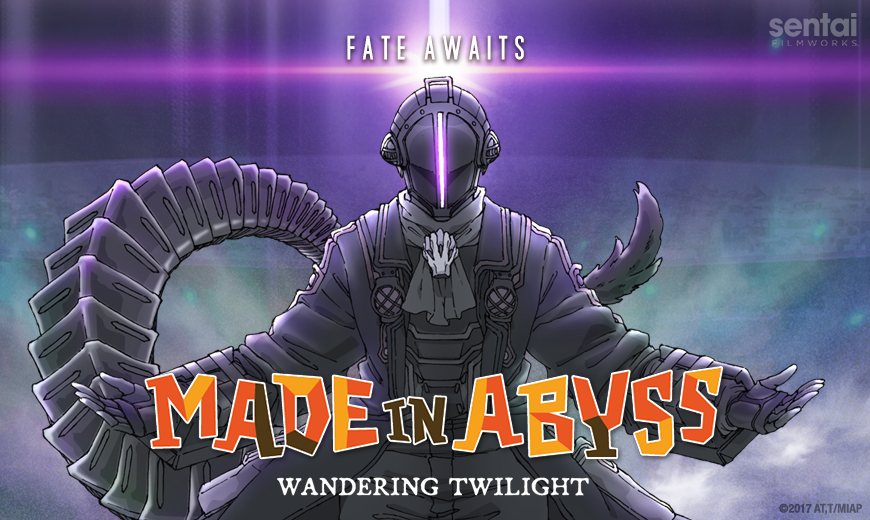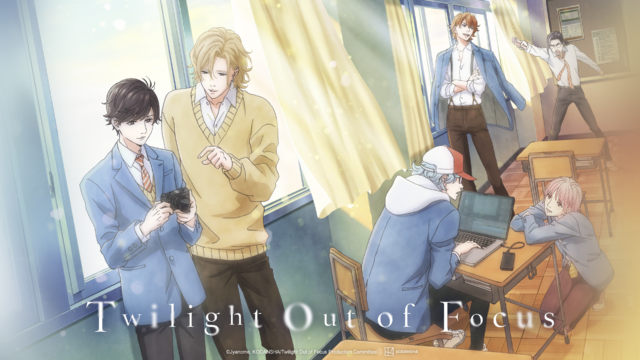English Dub Review: Made in Abyss: Wandering Twilight
Overview (Mild Spoilers Below)
Riko and Reg descend into the 4th layer of the Abyss, where they face intense adversity and intrepid ally alike.
Our Take
Made in Abyss: Wandering Twilight, following up on the previous film, is the second compilation film based on the 2017 dark fantasy anime Made in Abyss. This film collects the last five episodes of the show into about an hour and forty minutes. Given that the first film collected eight episodes in about just as much time, the stories told in the episodes represented here are given a lot more room to breathe. Upon watching the film, it’s very clear why they divided up the anime the way they did and allowed this portion of the story more spotlight.
Riko and Reg descend through the 3rd layer of the Abyss with relative ease and enter the 4th layer, where they spent almost the entirety of the film. As they traverse the various environs, creatures, and relics they find, Riko maintains her plucky and steadfast attitude, while Reg begins to grow more and more nervous as they advance. Reg’s constant nervousness initially serves as a competent defense against the threats in the Abyss, but as the film progresses, his nerves eventually start to work against him, hindering his decision-making.
Reg’s increasing paranoia is justified though, as the deeper they go into the Abyss, the more deadly and sentient the denizens of it become. The lethality of the first creature they run into on the 4th layer proves far too much for the duo, overwhelming them and forcing them to make a reluctant retreat. The aftermath of this encounter signifies a major turning point in the overarching story and reestablishes the tone for the rest of the film.
There are several moments in this film that are incredibly difficult to watch. One of the central themes of this story is dealing with pain, and while many types of pain are addressed, one of the most recurring ones is physical pain. There are several distinct scenes where characters are forced to endure some form of grievous injury and/or the rehabilitation from said injury.
These painful injury scenes are shown in full, unyielding detail, but with the correct amount of maturity and consideration. The camera doesn’t relent, letting almost all of the bodily tragedy unfold on screen. But it is never gratuitous and is accompanied by emotionally appropriate responses, which are as equally hard to watch. Additionally, the fact that all of the characters are children will amplify the viewing difficulty for many people. I do have to give a hefty amount of credit to the English voice actors, who competently portray children in great distress without breaking character. They did a great job, but it was most likely not a pleasant one to do.
I think, perhaps, the fact that the characters are children might be what ends up giving us the strength to keep watching. Children are inherently less familiar with the concept of futility given their limited experience with adversity. In the face of demoralizing, traumatic events, their naivete gives them a lot of resiliency, allowing them to easier seek a path forward. In a way, the choice to have the main characters be children increases their proclivity to forge onward.
A new character appears to aid Riko and Reg: Nanachi, a genderless, rabbit-like humanoid called a Hollow. The arrival of Nanachi not only allows Riko and Reg’s story to advance, but their knowledge and own personal backstory also unlock a vast amount of world-building, adding even more depth to the Abyss (no pun intended).
Nanachi’s studious and resourceful nature offers lots of insight into life in the Abyss. There are many inspired and fascinating traits about the fauna and flora of the 4th layer. For example, there’s a parasitic mushroom that lives symbiotically by resuscitating its host when it dies by injecting its nutrients into its body, which becomes crucial to the story.
They also go to lengths to try and help visualize and describe the effect of the Curse of the Abyss to Reg, how and why it only affects people as they ascend. Unlike some other stories, the objective explanation of the Curse does not demystify it or cheapen the terrifying effect it has. They succeed by not revealing too much at once, only just barely the right amount of information, which actually evokes even more fear.
Nanachi’s backstory is what provides the highest amount of dreadful detail to the Abyss. First of all, there is what they are: a Hollow, a human who ascended from the 6th layer and lost their humanity. Amidst all of the deformed humans resulting from this process, Nanachi is the only exception. But the retention of their humanity is not fortuitous; in fact, it’s the prime source of the intense tragedies in this film in both past and present. The scenes regarding their past are by far the ones with the most emotional intensity. Watching them unfold was easily the closest I came to shedding a tear.
Their backstory also brings to light a rather grim fact about the Abyss. The Cave Raiders, up until then, seemed like the intrepid adventurers, jumping headfirst into the unknown. But as the ecosystem of the Abyss becomes more fleshed out, we see that the influence of the Cave Raiders is just another natural facet of the environment. Their presence is not always a welcome discovery in the darkness; if anything, oftentimes the presence of another human can be the worst thing that could happen to you. The deeper one goes, the higher the risk of returning, and the more likely you are to try and drag others down with you.
Ultimately, Riko and Reg’s time in the 4th layer is spent learning and reflecting, rather than strictly advancing. The lack of progression doesn’t hamper the film at all though, as the incredible amount of world-building is compelling and enlightening. It appropriately increases all of the stakes of this adventure and sets up the excitement and tension of the next leg of the journey.
There are a few references to Reg’s past, most of which are kept intentionally vague, but with enough detail revealed to keep the mystery alive. While it does add a little to Reg’s character, it seems mostly done to encourage reading the original manga or waiting for the next anime adaptation to come out.
If I had to make one major gripe about this film, it would be that the extra room these episodes are given only exacerbates the fact that this is actually just a compilation film. Switching between the individual narratives is not always 100% smooth, which gives off the effect that you’re just moving on to the next episode, rather than watching one continuous film. But condensing scenes to achieve a more cinematic flow would most likely harm the story, so it’s a necessary evil to make the conversion to film.
I greatly enjoyed my time with Made in Abyss, but I don’t know if I could watch it again; at least not anytime soon. One viewing was potent enough to receive the entirety of its emotional payload, even in this slightly abridged film. I’m writing this review listening to the ending theme on Spotify, and even just that gives me some chills. I had heard rumblings back when the anime originally aired that this was fairly impactful, and now I can see why.
I highly recommend watching Made in Abyss as a standout example of engaging, sinister, and emotional storytelling, and an especially fantastic one involving children. But I believe the more optimal viewing method would be to watch the TV series. The compilation films allow you to get the gist of the story in about half the time, but a lot of detail is most likely lost. Spending that much more time with these characters probably grants a greater amount of attachment, which makes the emotional investment worth that much more when it pays out.
This is an Abyss you should definitely consider gazing into.


























Do we know if Hulu will be the only entity to have the dub, or if it will be on other platforms, too? The show in general is definitely going to be on multiple platforms.